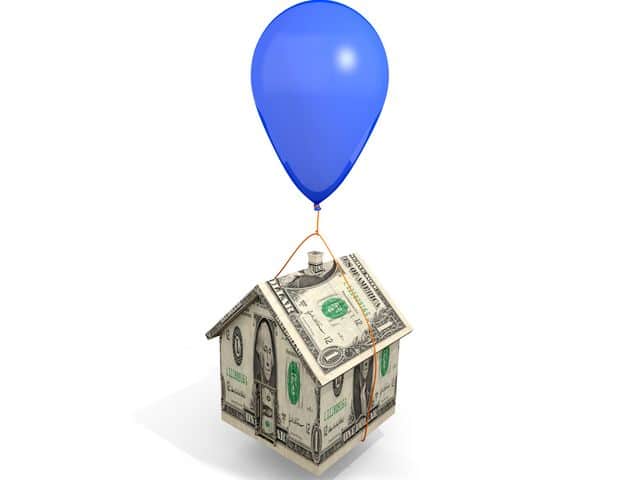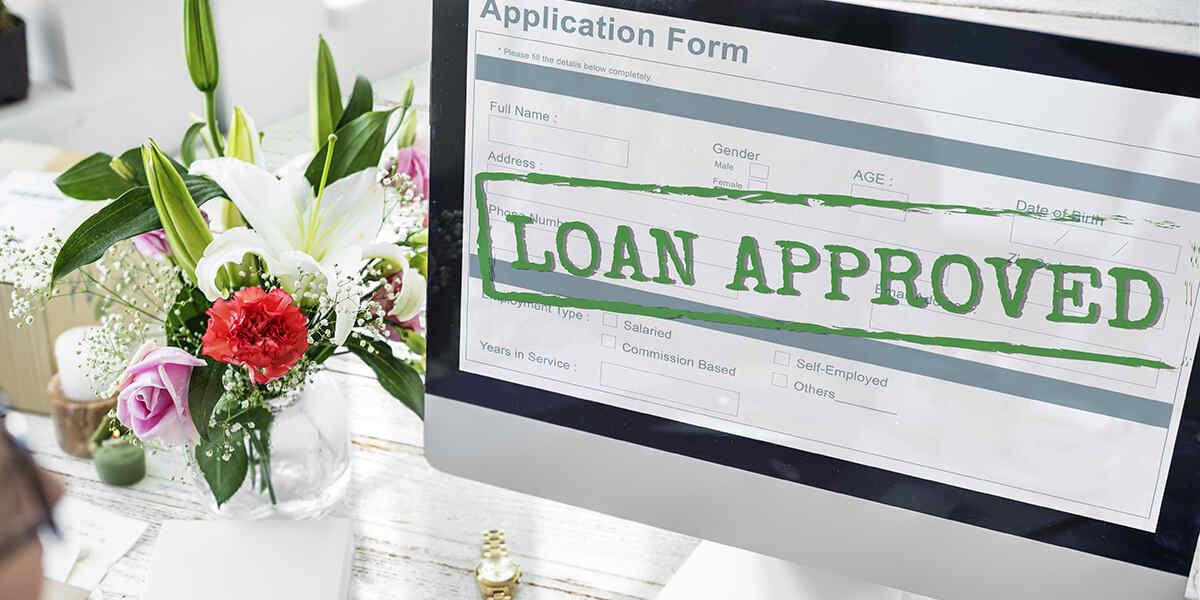There are a variety of ways to finance a house. For example, the FHA loan provides low down payment options, as well as flexible credit requirements — the perfect first-time buyer program. On the flip side, borrowers who are able to afford a higher month-to-month payment might choose a 15-year mortgage so they can save on interest.
However, what about balloon mortgages? Even though this kind of loan makes sense for a few borrowers, it may not be the ideal solution for you. Read further while we go over the ins and outs of balloon mortgages.
How do balloon mortgages work?
Balloon mortgages are loans that are paid off with a lump sum upon the completion of the term. In the majority of cases, borrowers only are responsible for the interest until they tackle the whole balance with their final payment. Typically, lenders set up a balloon loan to have a shorter term, as compared with the traditional 15- or 30-year mortgages.
Let’s say you are in the first couple of years of your 30-year home loan. If you glance carefully at your mortgage statement, you will see that the servicer applies most of your money toward interest. Over a period of time, though, you will begin to pay more on the principal, opposed to interest.
That payoff structure is referred to as amortization. Most borrowers usually favor traditional mortgages because they do not need to be concerned with a rise in their month-to-month payment. It is important to keep track of the mortgage maturity date, ensuring that the loan matures at the completion of the term as long as the borrower remains current.
Homeowners who have a balloon mortgage have to have a different mindset. While they absolutely have to remain on top of their interest-only payments, they also should have a good idea of when their larger, final payment is due. It begs the question of who makes an excellent candidate for balloon loans.
Why would you even obtain a balloon payment mortgage?
Let us begin with the obvious reason why you’d choose a balloon mortgage. Maybe you are in the market for a house yet do not intend to remain in the home for over ten years. Or perhaps you wish to spend the following couple of years saving as much funds as you can for your forever residence.
Therefore, who’d benefit most from balloon mortgages? Well, this kind of loan might cross your mind if you envision yourself earning substantially more income in the future. In addition, balloon mortgages are viable solutions for borrowers who expect to get a windfall of money, whether it is from an inheritance or the sale of another property.
What are the pros and cons of balloon mortgages?
Below we list the main disadvantages and advantages of balloon payment mortgages.
Pros
- Straightforward process of qualification – It is possible to feel comfortable knowing that you will not need to jump through hoops to get a balloon mortgage. Just keep in mind to have all of the necessary paperwork, like W-2’s and bank statements, organized beforehand.
- Affordable payments – For some homeowners, a thirty-year mortgage will lead to limited cash reserves, as well as a depleted budget. A balloon mortgage, alternatively, permits you to place your hard-earned funds toward additional expenses.
- Lower interest rate – A balloon mortgage oftentimes comes with an amazingly low interest rate. This means borrowers who pick this particular type of loan wind up keeping more of their funds, at least before they make their lump sum payment. Then, it is possible to use this extra money to replenish your emergency savings account, build a down payment fund for the next house, or eliminate debt.
Cons
- Massive end payment- Even the most disciplined of borrowers have a hard time putting funds away for the balloon payment. Certainly, it is great to have additional funds every month for many years. However, the unfortunate truth is that lots of homeowners do not save enough money to pay the balance off when the loan is due.
- Higher risk of foreclosure – There always is a foreclosure risk while financing a home. However, that probability exponentially increases with balloon loans in the picture. It should not be much of a shock when you think about the fact that the lump sum payment might be hundreds of thousands of dollars.
How can you get out of balloon mortgages?
There are possible solutions if you are facing an uphill battle with a balloon mortgage. We recommend first speaking with your servicer and asking about loan modifications. Additional, not-so-popular options involve a bankruptcy or short sale.
Now, depending upon present interest rates, a refinance might be the simplest way out of the balloon mortgage. It is possible to increase your approval opportunities by improving your credit rating and lowering your DTI (debt-to-income ratio).
Who knows? You may be looking at around $1,000 in month-to-month savings with a mortgage refinance.
How to Pay A Balloon Loan Off
There are some different ways that a balloon payment is commonly made. Let us take a look into these.
How to Save For a Balloon Payment
The first option includes simply saving up and making the balloon payment. It might make the most sense if you wish to get into a home now, yet you are anticipating a substantial increase in income within the near future. Not many folks may know for a fact that their income is about to rise; however, it is possible. Union members oftentimes have seniority stipulations within their contract so that as you remain in the job, it is possible to expect a specific pay increase. While other ones might plan for an annual raise, there aren’t any guarantees.
The other scenario where you may pay off the balloon loan in cash might be if you were selling your house because you improved and flipped the property. If you are doing house flipping, it is simpler to get something such as a balloon mortgage than a standard housing loan because you usually need to hold or occupy the home for a certain period of time before you sell it.
Refinancing
The other way that balloon payments are usually paid off within the mortgage arena includes refinancing into a conventional mortgage. To do that, there are many things you should consider.
Know what you are getting yourself into. Once you refinance, you must understand that you are paying off one loan by taking on an additional one under different terms. If you are going from interest-only loan payments to one which completely amortizes by the end of the term, it is vital to note that the payment also will almost definitely increase.
Refinancing might be a great option if you have sufficient equity or are able to pay the closing costs to perform the refinance and you have plans on remaining in your house without any plans of moving in the future. If you have the funds to pay your balloon loan off and move ahead without any mortgage payment whatsoever, that is another option. However, many folks would need to deplete their savings if they had the funds to do that at all.
To refinance, of course, you must have the ability to qualify. Part of being eligible for a mortgage is making certain that you have a sufficient credit rating. It is possible to be eligible for an FHA mortgage with an average FICO Score of 580 and up. It is essential to note that it is possible to be eligible with greater debt-to-income ratio and formal loan options with an average FICO Score of 620 and up.
In addition, there are asset and income considerations to make. You must earn sufficient income to be eligible for a home loan. As a general rule of thumb, you want to ensure that your month-to-month debt payments do not exceed over 43 percent of your month-to-month income to be eligible for the majority of possible options. It also is suggested that you have at a minimum of two months’ worth of mortgage payments on-hand as reserves in case of a loss of income, even though all mortgage programs have various requirements as far as assets are concerned.
The number one risk of relying upon this approach is that you might not have the ability to do it. Refinancing not only relies on you having your income and credit together but it also relies on having enough assets. However, there also may be factors that are beyond your control, such as existing property values in your region and its impact on the quantity of equity you have which may impede your capability of qualifying. You certainly should talk to a Home Loan Expert regarding your options.
What are some alternative mortgage structures?
If you are getting a balloon mortgage, a common reason for doing it includes saving money on a mortgage payment. An alternative you might take a look into is the adjustable rate mortgage.
A standard adjustable rate mortgage commonly has thirty-year terms; however, for a period at the start of the loan – typically 5, 7 or even 10 years – the interest rate is lower than what it is possible to get on a comparable fixed-rate mortgage. If you have not sold your house by the end of a teaser period, you either can refinance into a fixed-rate mortgage or allow your adjustable rate mortgage to adjust based on present market interest rates. The degree of increase is going to be subject to being capped in order to prevent abrupt payment shock. When the interest rate gets adjusted, the loan is re-amortized over the rest of the term. Usually, adjustable rate mortgages adjust one time a year until a loan is paid off.
One other alternative includes taking something such as a 30-year fixed loan. Even though the degree of interest you’ll pay is going to be higher, you will be paying less on a month-to-month basis because of the longer term.
Before you settle on a loan option, it is vital that you understand your financial circumstances to help determine what loan is better for you. We offer some mortgage calculators you might take a look at. Plus, with a mortgage calculator you can determine how much house you can afford. If there’s any doubts, speak with a financial advisor.
You now understand balloon mortgages and their alternatives, so if you are prepared to get started, apply online with Champions Mortgage. As you plan your finances, it’s essential to consider how much of your income should go to mortgage payments to ensure long-term affordability.
Get approved to purchase a house!
Balloon mortgage payments: How much are they?
Irrespective of structure, the enticing element of balloon mortgages is that they typically all have low interest rates and low monthly payments — certainly lower than your usually fixed-rate mortgage. As aforementioned, some month-to-month payments are just interest. In other instances, your month-to-month payment is the exact same as what it might be if you had a thirty-year mortgage. We will go over how much a balloon payment might be next.
Lenders typically determine month-to-month balloon mortgage payments the exact same way they will for standard 30-year mortgages. (They utilize the exact same amortization table.) Therefore, whether you obtain a 30-year traditional mortgage or 5-year balloon mortgage, the monthly payments might be the same. If you are attempting to estimate the monthly payments, begin by using our mortgage calculator.
Since balloon mortgages are short-term loans, their interest rates usually are below average. If you’re working with an interest-only loan, the monthly payment might even be lower.
Mortgage rates heavily depend on your financial circumstances, like credit rating.
The low monthly payments and low rates, of course, do not change the truth that you’ll have an extremely large quantity left to pay when the balloon mortgage ends.
Because terms vary so much, be certain that you understand your specific mortgage agreement that is made with the lender and what the monthly payments are before you sign anything.
So get in touch with the pros at Champions Mortgage at (281) 727-2500 and allow one of our mortgage consultants to find you the proper loan.







